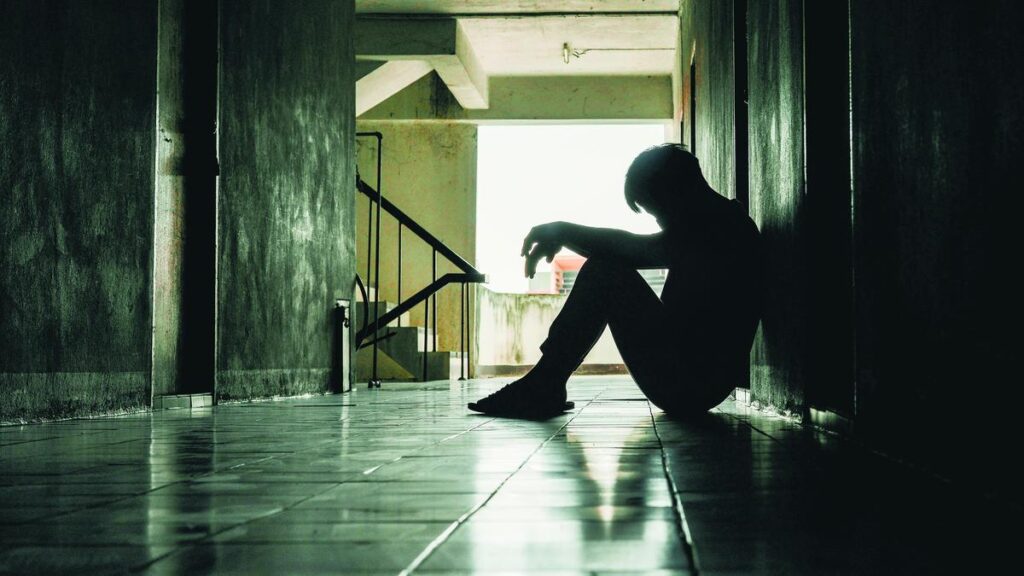India recorded 1,70,924 deaths by suicide in 2022, an increase from 2021 (1,64,033 suicides) as per data from the National Crime Record Bureau (NCRB). While the National Suicide Prevention Strategy (NSPS) aims to reduce suicide mortality by 10% by 2030, experts say achieving this target will hinge on strengthening data collection and addressing systemic gaps in the mental healthcare landscape.
A systematic analysis for the Global Burden of Disease Study 2021, the ‘Global, regional, and national burden of suicide, 1990–2021’ published in The Lancet this month, reveals that across the study period, the south Asia super-region, which includes India, consistently had the youngest mean age of death from suicide. NCRB figures show that 35% of deaths by suicide in the country were in the age group of 15 to 29.
Suicide data in India is primarily collected by the NCRB, which falls under the Ministry of Home Affairs. This data focuses on deaths by suicide and overlooks suicide attempts as well as underlying social and mental health factors that lead people in distress to make these attempts. As Ramdas Ransing, associate professor of psychiatry at AIIMS, Guwahati, points out, “Without capturing suicide attempts, mental health backgrounds, and social triggers, interventions will always remain incomplete.”

No centralised suicide surveillance system
The Union government is aware of some of these gaps: the NSPS highlights the absence of a centralised suicide surveillance system and states that this is a major barrier to prevention strategies. There is currently no integrated method to collect data from hospitals, police, and educational institutions. Underreporting further complicates the situation. Families may avoid reporting suicide attempts due to stigma, leading to a significant portion of cases going unrecorded. “Administrative challenges also weaken data collection. The limited number of mental health professionals in the country, inadequate training, and funding constraints prevent the establishment of a robust tracking system,” says Dr. Ransing.
Ram Pratap Beniwal, professor of psychiatry at RML Hospital, New Delhi, says that despite increased awareness over the years, mental health services in the country continue to fall short of what is required, and remain largely inaccessible in rural areas. “In spite of an increase in postgraduate seats for psychiatry, mental health services have not kept pace with the demand, especially in rural regions,” he says. He also highlights the persistent stigma preventing people from seeking help.

Dr. Beniwal also says that criminalising those who survive suicide attempts remains a serious barrier in providing mental health interventions. Decriminalising suicide is important in creating a compassionate, supportive environment, encouraging survivors to access care without the fear of legal repercussions. While under Section 115 of the Mental Healthcare Act, 2018, suicide attempters are presumed to have severe stress, and are not to be punished, suicide in itself remains a criminal offense under the Bharatiya Nyaya Sanhita, which replaced the Indian Penal Code.
Dr. Beniwal also stresses the need for targeted interventions for vulnerable groups such as students, farmers, and individuals with substance abuse issues. “This includes regulating coaching institutes for competitive exams like NEET and JEE, as the extreme pressure these students face often contributes to mental health struggles,” Dr. Beniwal says .

Building a better suicide surveillance system
Nilesh Devaraj, associate professor of forensic medicine and toxicology at AIIMS Guwahati, who is working on the development of the minimum data set for the National Suicide Registry, an initiative that aims at recording suicide related data , highlights the importance of the fourth pillar of the national suicide prevention strategy, which is suicide surveillance. “It is like finding the root of it all. Without a clear understanding of the data, every other effort, whether healthcare interventions, media strategies, or limiting access to means – risks missing the mark,” he says. Therefore, he and other experts are calling for a multi-state research initiative with support from the Indian Council of Medical Research (ICMR) and State governments, to develop an updated suicide registry.
In response, a project in its pilot stage, initiated by AIIMS, Guwahati, in collaboration with the National Mental Health Programme (NMHP), Assam and the Department of Education, Assam, focus on improving student mental well-being and reducing suicide risks. This aims to strengthen mental health infrastructure, training teachers and staff to identify distress signals, and conducting workshops for students on self-help and peer support.

These initiatives also call to integrate data from the District Mental Health Programme (DMHP) and the NMHP. The goal is to collect real-time data by involving healthcare workers, law enforcement, and educators. This will not only record deaths by suicide but also track attempts, identify high-risk behaviours, and monitor patterns. Dr. Ransing explains, “We should be identifying warning signs, tracking suicide attempts, and mapping high-risk areas.”
A multi-sectoral approach
Experts also emphasis that suicide prevention requires collaboration beyond the health sector. The success of surveillance efforts relies on cooperation between healthcare, law enforcement, education, and the pharmaceutical industry. Dr. Devaraj says, “Suicide is also a social issue. We should be engaging pharmaceutical teams, legal experts, and other stakeholders. Without collective action, change will be limited.” He also acknowledges the importance of the Tele MANAS initiative, a toll-free mental health helpline that offers immediate psychological support.
However, Dr. Beniwal points out that despite some progress, “We are far from reaching the 10% suicide mortality reduction by 2030 target. Without a dedicated national suicide control program and crisis intervention, the goal remains distant.”
Published – February 25, 2025 04:55 pm IST

